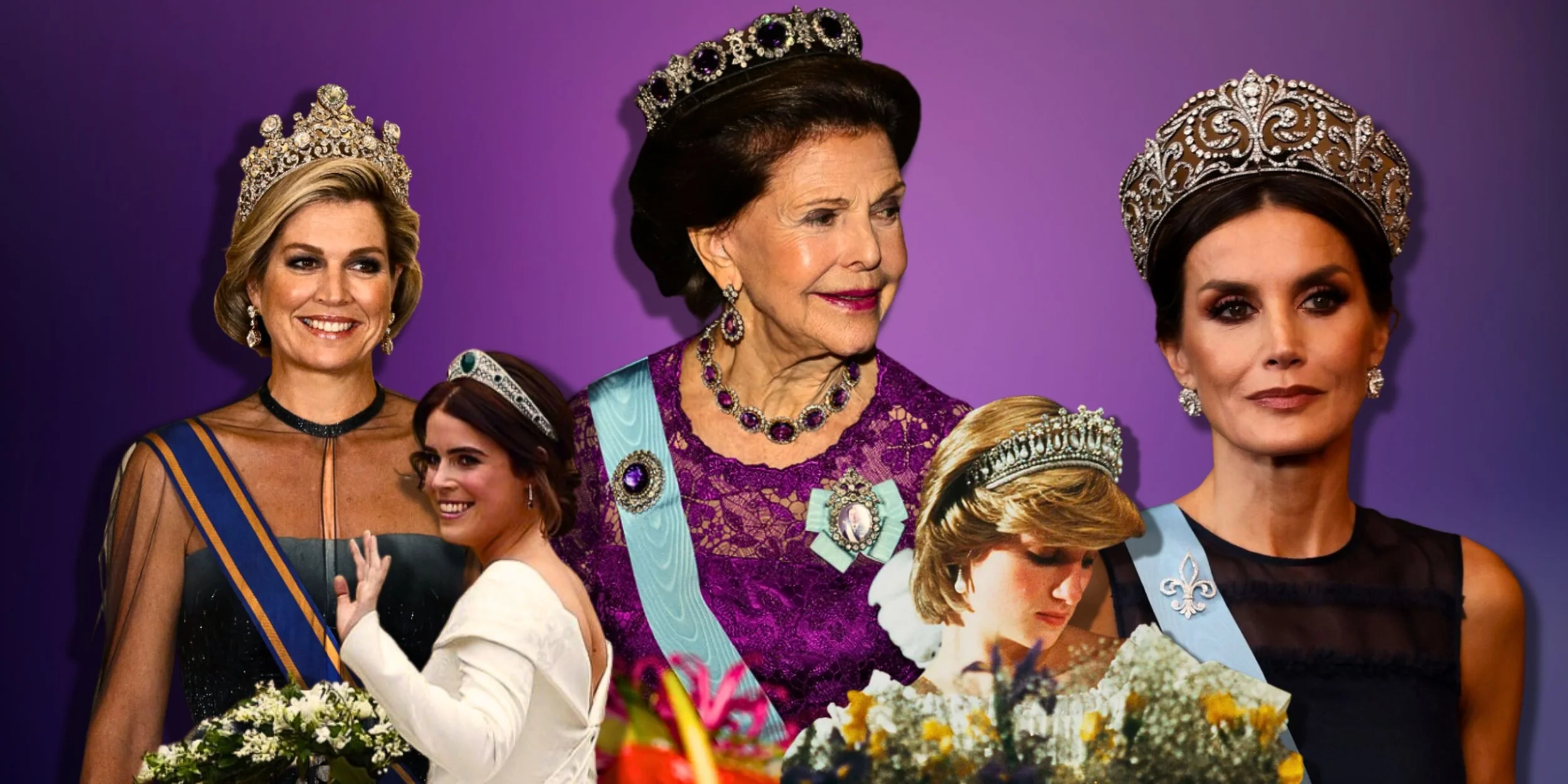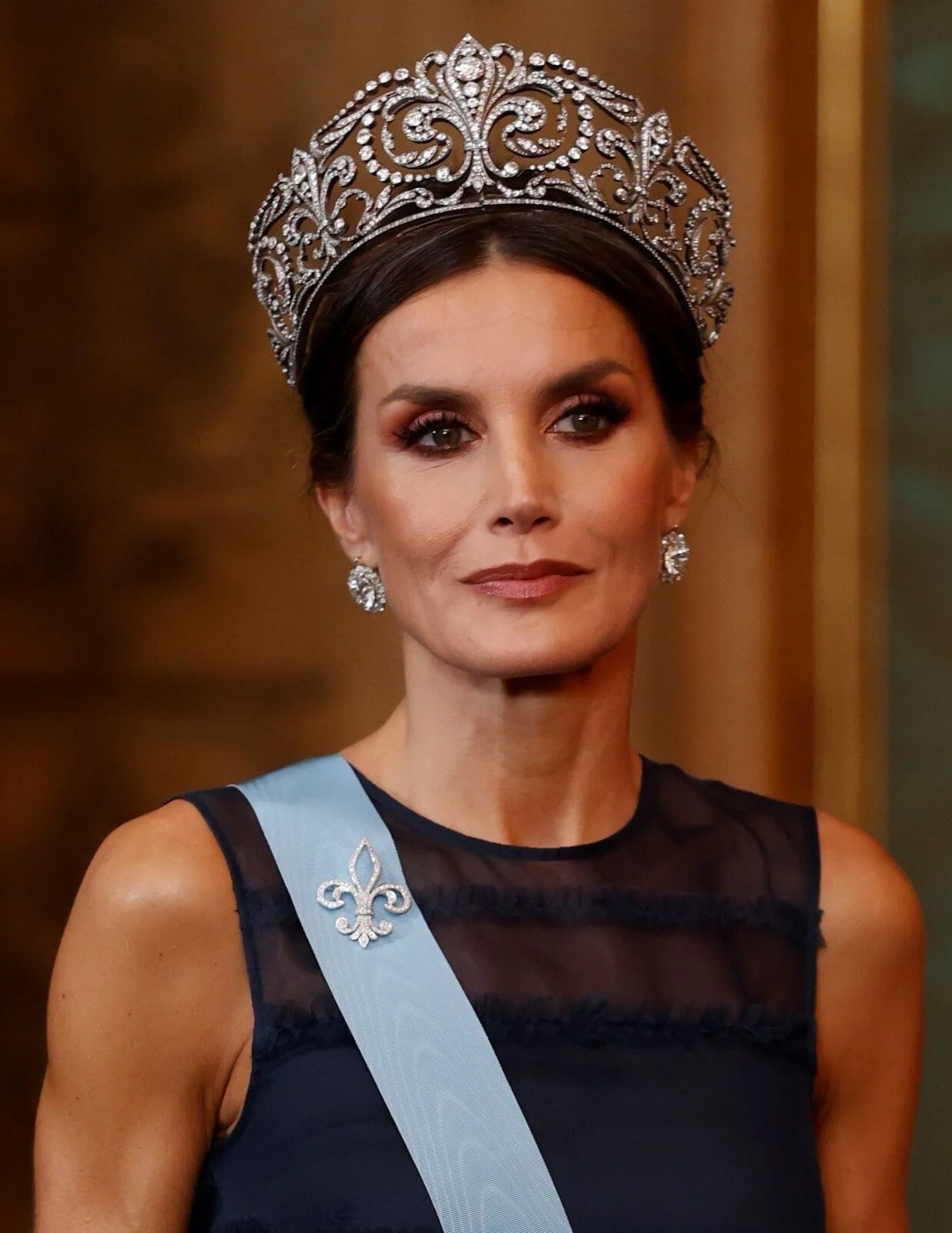ROYAL CROWNS & TIARAS
Of the 40 countries in possession of royal jewels, here are the most precious and beautiful royal headgear worn by monarchs - kings, queens, and emperors - in the world.
It’s fascinating how such a piece of jewelry can wield so much power, command, and respect, in particular – royal crowns and tiaras. They symbolize power and authority as well as victory, honor, and glory. It is also the most traditional form of headgear worn by monarchs such as kings, queens, and emperors.
Throughout history, works of art depicted royal crowns being brought forth by angels or placed on a monarch’s head by angelic beings. This reinforced the belief that Western Kings were directly anointed by God and that His power flowed through them, protecting the people. Crowns of Roman emperors were represented by laurel wreaths which sometimes took the shape of oak leaver, flowers, or thorns.
Whatever form the crown took, its intent was the same- to convince the masses that their rulers were chosen and protected by God (or in those times, the gods, or deities). This gave kings and queens a tremendous advantage and a basis for monarchies to produce heirs so that the families in power remained in power.
Besides religious symbolism, crowns and tiaras symbolize wealth as they were made of the finest materials such as metals and jewels. The most dazzling and impressive part of royal crowns are their gems and stones. The Imperial State Crown (which is part of the Crown Jewels of the United Kingdom) is adorned with some of the most famous jewels in the world. It has the St. Edward’s sapphire, the Black Prince’s Ruby, the Stuart Sapphire, and Queen Elizabeth’s pearls.
Whatever royal crowns, tiaras, and coronets or diadems represent today, they are an important part of culture holding with them historical and artistic value as they were made of the finest materials and craftsmen of their time. Today there are 40 countries with royal crowns and some of them have more than one. Here are some of the most beautiful royal crowns in the world.
QUEEN LETIZIA OF SPAIN
THE FLEUR DE LYS TIARA
Queen Letizia’s favorite tiara is the Fleur de Lys (also known as “La Buena”) — a century old headpiece that was made for her husband’s great-grandmother, Queen Ena of Spain.
Spain doesn’t have crown jewels like other monarchies, but they do have a set of jewels passed from monarch to monarch known as the ‘joyas de pasar’ which translates to English, ‘the jewels that are passed on.’
The collection was created by Queen Victoria Eugenie of Spain, who is better known to us as Queen Ena. When she made her will in 1963, she included a codicil that designated a group of her jewels to be passed down from monarch to monarch.
In the ‘joyas de pasar’ collection, Queen Ena included her wedding tiara, the ‘Fleur de Lys’ diadem (aka: ‘La Buena’). The tiara was made by Ansorena in 1906 who included the ‘fleur-de-lis’ symbol of Spain’s reigning family, the House of Borbon, into the design of this stunning headpiece. King Alfonso XIII gave the Fleur de Lys tiara as a wedding present to Ena, his new bride.
QUEEN MAXIMA, DUTCH MONARCH OF THE NETHERLANDS
THE LEGENDARY DIAMOND STUART TIARA
The Stuart diamond tiara was first owned by Queen Mary II, is now in the hands of the This Goliath of a diadem includes one of the rarest and most historic diamonds in any royal collection, the Stuart (or Holland) Diamond. That single diamond alone weighs 39.75 carats. Today, the Stuart Diamond Tiara belongs to Maxima, the Queen of the Netherlands—who is the Netherlands’ first queen consort to have been born as a commoner, as well as outside of Europe.
The Stuart Diamond’s first recorded owner was a member of the House of Stuart: Queen Mary II and King William III of England. They purchased the diamond after they married. Originally set in a brooch, it was later turned into a pendant necklace by Queen Charlotte, and then finally placed in a tiara by order of Queen Emma in 1897 for her daughter Princess Wilhelmina. She would go on to wear the Stuart Tiara at her investiture in 1898 and a smaller version of the tiara -- without the upper row of diamonds, including the Stuart diamond -- for her wedding in 1901). It was designed by Schurmann.
In May of 2018, Queen Maxima debuted a version of the Stuart Diamond Tiara (without the actual Stuart Diamond itself or the central element that supported it. The large clusters of the tiara were repurposed as earrings, resulting in a much more wearable and balanced tiara.) at the Luxembourgish state visit that spring.
QUEEN ELIZABETH OF THE UK
THE POLTIMORE TIARA
The Poltimore Tiara was made in 1870 by the House of Garrard in London for Lady Poltimore, the wife of the second Baron Poltimore and treasurer to Queen Victoria’s household (from 1872-1874). Lady Poltimore wore this fantastical creation to the coronation of King George V in 1911.
In January of 1959, the family put the tiara up for public auction and was purchased for 5,500 pounds by Princess Margaret. Thanks to Margaret, the Poltimore Tiara is now forever a part of history, as it is the tiara most associated with the princess. She first wore the tiara to her wedding to Antony Armstrong-Jones on May 6, 1960.
This tiara is not your typical royal headgear, as the Poltimore Tiara’s design allows it to be worn in many ways. This convertible sparkler can transform into a necklace (which Margaret did in 1960) or eleven brooches. When worn, the tiara almost appears to float. The tiara’s framework is laced with a brown ribbon, meant to match Margaret’s hair color, which gives the illusion of floating above one’s head. As a tiara, it can also be worn in its full glory or in a slightly smaller version.
Its style is the epitome of Victorian-era jewelry as its diamond scrolls evoke nature, flora, and fauna. The design is an arranged line of cushion-shaped and old-cut diamond clusters alternating with diamond-set scroll motifs. Each of which is surmounted by old-cut diamond terminals, to the collet-set diamond line, mounted in silver and gold (circa: 1870).
After Princess Margaret’s death in 2002, the Poltimore Tiara was held at Christie’s for auction from Margaret’s private collection. The tiara went for 926,400 pounds (now around $1.1 million) to a private buyer. Its whereabouts are unknown.
PRINCESS DIANA OF THE UK
THE LOVER’S KNOT TIARA
Queen Elizabeth loaned the Lover's Knot Tiara to Princess Diana in 1981 as a wedding gift. Although Diana opted to wear the Spencer Tiara (a family heirloom) on her wedding day instead, the Lover's Knot would become one of Diana’s favorite pieces, despite it being so heavy.
When Queen Mary died in 1953, the crown was passed down to her grand-daughter, Queen Elizabeth II. The Queen wore the tiara several times in the '50s, before moving on to other pieces like the Girls of Great Britain and Ireland tiara, which have since become her favorites.
When Diana and Charles divorced, the crown was returned to Queen Elizabeth II. Diana was allowed to keep her jewelry as part of the settlement, but the tiara was on loan from the Queen and thus had to be given back and reportedly put into a safe at Buckingham Palace.
PRINCESS OF WALES KATE MIDDLETON
THE CARTIER HALO TIARA
The Duchess of Cambridge (now the Duchess of Wales) Kate Middleton wed Prince William, the Duke of Cambridge on April 29, 2011, in a highly televised royal wedding that took the world by storm. While her late mother-in-law, the late Princess Diana wore a Spencer family heirloom to her own wedding, Kate chose a sentimental headpiece from the Queen: the Cartier Halo tiara.
Originally purchased by King George VI for his wife, Queen Elizabeth, the Cartier Tiara has quite a history with the royal family. Given that the Duchess of Cambridge was a layperson when she met and then married Prince William, just as Queen Mary was when she met and married George VI, the tiara was likely a deliberate choice meant to pay homage to the Queen Mother herself.
In the months leading up to the wedding, there were rumors that Kate Middleton hoped to wear a whimsical flower crown instead which aligned with her own more casual bohemian taste. In the end, Kate chose the Cartier Halo Tiara for her big day. Kate paired the tiara with an ivory silk tulle veil hand-embroidered with flowers.
The diamond tiara was borrowed from Queen Elizabeth, continuing a royal family tradition, and paying homage to the role she would be marrying into the future Queen of England.
*(For royal events, Kate has been known to wear the Lotus Flower tiara).
The Cartier Halo tiara is now considered one of the most iconic royal wedding tiaras. Comprised of 739 brilliant-cut diamonds and 149 baguette-cut diamonds, the bedazzled tiara is an impressive showcase of royal grandeur without being too over-the-top.
PRINCESS EUGENIE OF THE UK
THE GREVILLE EMERALD KOKOSHNIK TIARA
Although it was widely rumored Princess Eugenie would wear the York Tiara on her wedding day in 2018, she chose the Greville Emerald Kokoshnik Tiara. This Tiara was made in ‘kokoshnik’ style by the French jeweler Boucheron in 1919. It consists of rose-cut pave diamonds set in platinum with a total of six emeralds with the largest emerald at its center.
First worn by Russia’s Imperial Court in the early 19th century, this diamond and emerald headpiece is rumored to cost 17 million dollars. Dame Margaret Greville was the tiara’s original owner, a famous society hostess who, upon her death, left her jewels to the Queen Mother.
In 2018, the Queen lent it to Princess Eugenie for her wedding day — making it quite the extravagant “something borrowed.” Eugenie paired the Kokoshnik tiara with diamond and emerald drop earrings, which were a gift from her now-husband, Jack Brooksbank.
QUEEN SILVIA OF SWEDEN
QUEEN SILVIA OF SWEDEN / GETTY IMAGES
THE NAPOLEONIC AMETHYST TIARA
The stones of the Napoleonic Amethyst Tiara are believed to have originally belonged to Empress Joséphine, the wife of Napoleon Bonaparte, as a set - a necklace, earrings, and bracelet. Hence the name of the tiara.
The jewelry was passed down through her daughter-in-law, Princess Augusta of Bavaria to the next generation, Joséphine of Leuchtenberg. The amethysts found their way to Sweden when Josephine married the future King Oscar I in 1823. It wasn’t until the reign of the current Queen Consort, Silvia, that the jewelry reappeared to the public but this time Queen Silvia had the amethysts redesigned into the tiara we see today.
The tiara is styled as a circlet and features deep violet-colored faceted amethysts each set horizontally in a diamond surround and separated with interlocking diamond loops.







